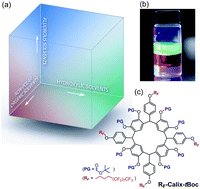Orthogonal processing: A new strategy for organic electronics†
Abstract
The concept of chemical orthogonality has long been practiced in the field of inorganic semiconductor fabrication, where it is necessary to deposit and remove a layer of photoresist without damaging the underlying layers. However, these processes involving light sensitive


 Please wait while we load your content...
Please wait while we load your content...